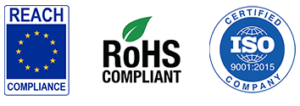What is active alignment? Active alignment refers to the process of fine-tuning or precisely aligning components, typically optical or mechanical systems, while the system is actively operating. This method is commonly used in the manufacturing and assembly of high-precision devices, such as cameras, sensors, and optical instruments. In contrast to "passive alignment," where components are assembled based on predetermined measurements or templates, active alignment adjusts the components in real-time while…
Paven PatelOctober 2, 2024


